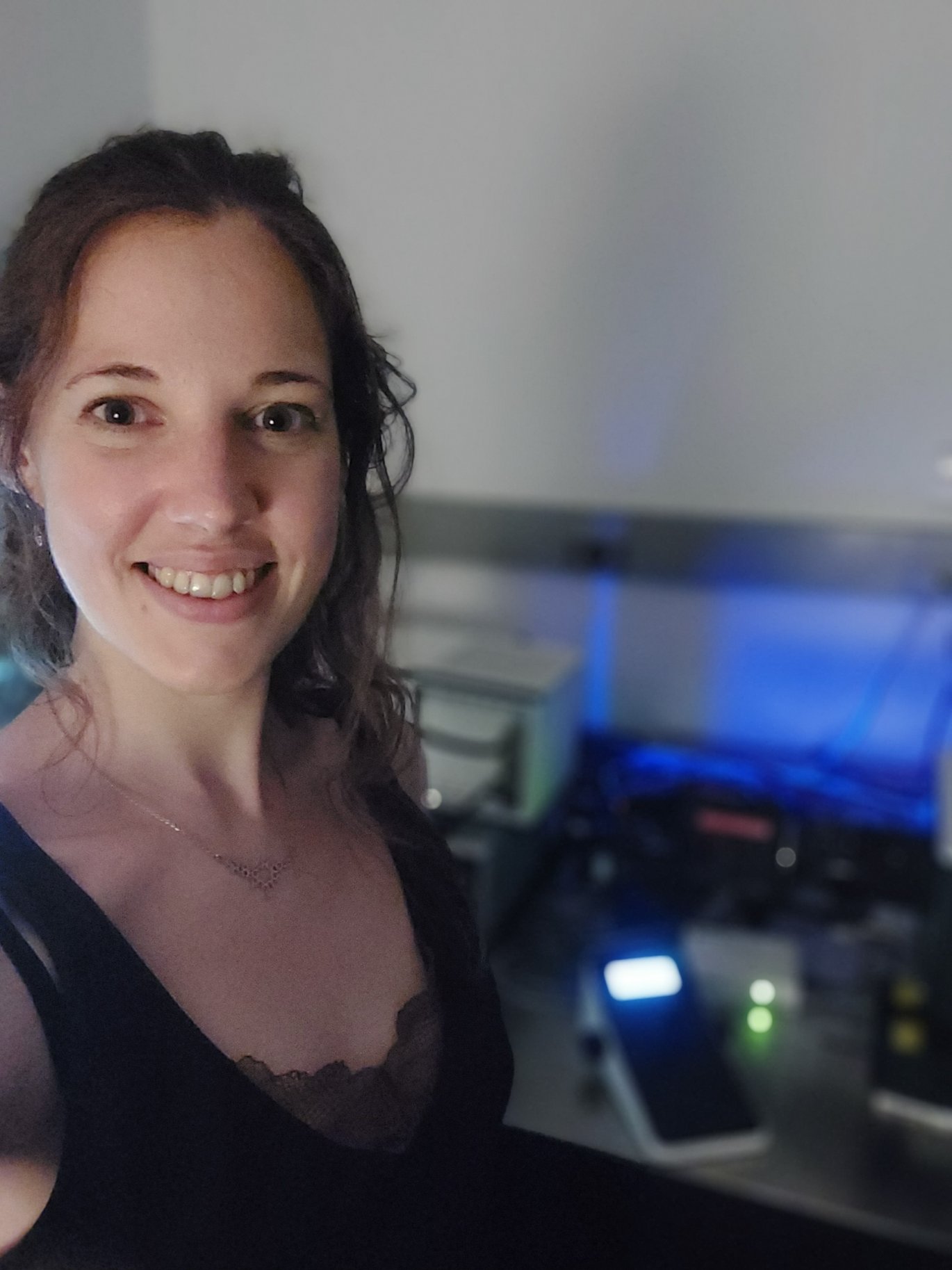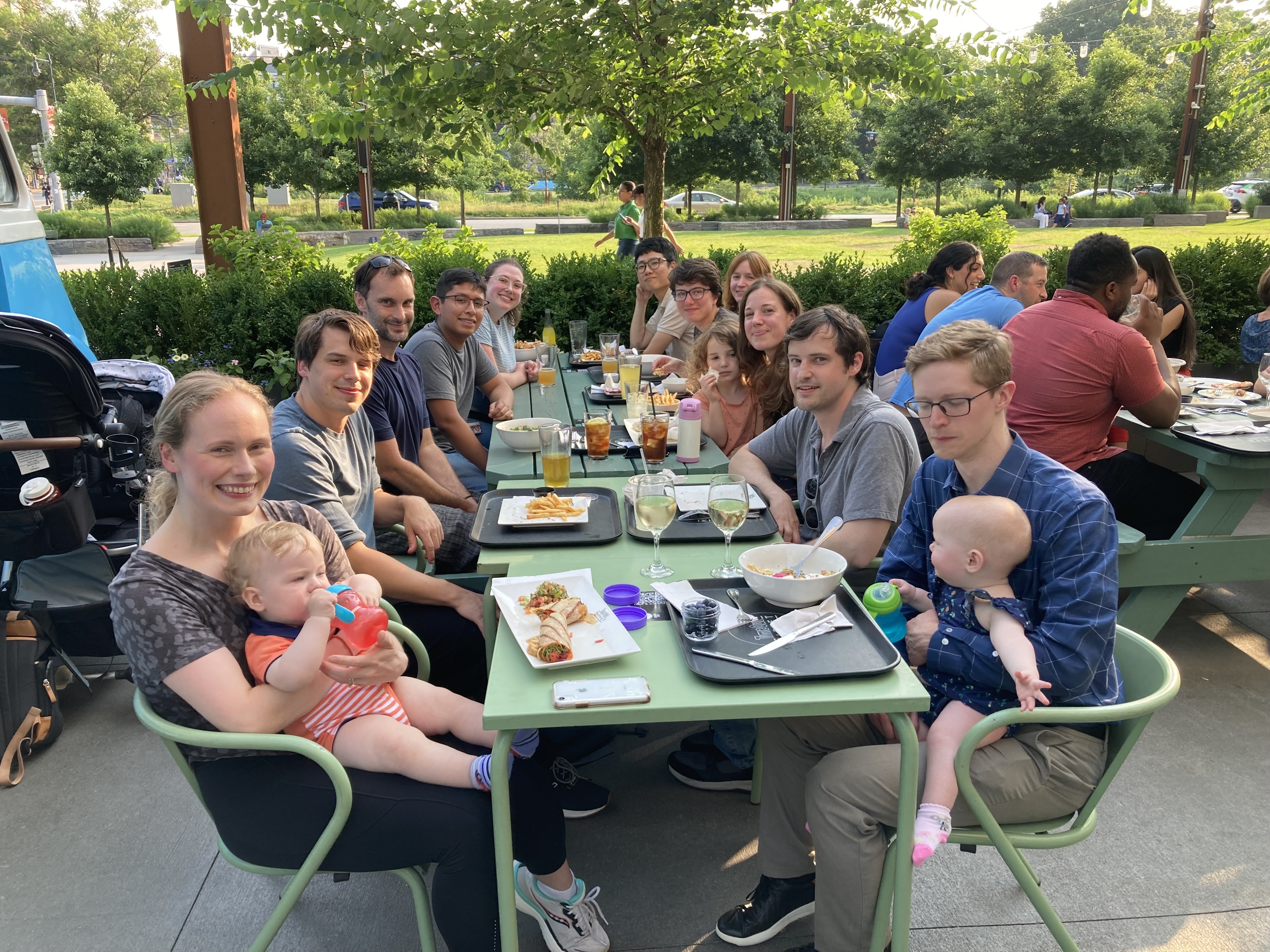Blogpost: My month at Boston University
19th of June, on Commonwealth Avenue. The train of the Green T-line leaves with a shrill noise. I am in front of The Tower. Nearby, students come in and out from Starbucks with To-Go coffees and paper bags from Dunkin Donuts. Yes, Denmark is far away, and here I stand in the middle of the Boston University campus where I will spend the next couple of weeks.



Blogpost by Assistant Professor Noemie Mermet-Joret
Prof. Alberto Cruiz-Martin is waving to me from across the street ” You’ve made it !!”, because yap, preparing this stay abroad, bringing my husband and my young kid for an entire month on the other side of the ocean, finding a ’not too crazy expensive’ flat to rent for a month while avoiding scams, packing the essentials despite a suitcase full of toys, putting on board collaborators there a few months in advance to do experiments for me so I have something to work on when I come, shipping my own lab samples at the last minute, I must admit it, it has been a journey. But we’ve made it!
I have one month to run an experiment and learn about a technique I don’t have any expertise in combining two-photon in-vivo calcium imaging with multiplexed in-situ hybridization.
I started my stay in Alberto’s lab. And from day one, I could already feel the sense of collegiality at BU. I have animals ready for me to image with 1-photon miniature microscope (a big thanks to Andy Alexander from Michael Hasselmo’s lab). On the seventh floor of a new and beautiful glass tower, I am welcomed into Hasselmo’s lab to use one of their systems with a PhD student, Samantha Malberg. After two days spent troubleshooting some equipment issues, we managed to record very nice calcium activity from the prefrontal cortex: Step 1 is done!
The next step, take nice calcium imaging from these mice, this time with a 2-photon microscope. From here, I stepped into Prof. Jerry Chen’s lab, my main collaborator on this project, to be introduced to staff scientist Jack Giblin who has all the required expertise to help me. After a few hours and some troubleshooting, we finally managed to capture beautiful images from the cortex: step 2 is done, and we are not even at the end of the first week.
My own tissue samples are stuck at customs in Belgium and will only arrive in the US at the end of my second week. Luckily, we were prepared for this eventuality, so I started to work with what I had there.
The third step consists in doing tissue clearing prior to labelling genes of interest. For this step, I am introduced to Ph.D. student Caroline Habjan who teaches me how to properly clear the tissue. It takes a few days and a lot of steps. Meanwhile, my own samples have arrived so I can now repeat these clearing steps on my own. I have now my own routine at the lab, and truly feel part of the team: everyone is willing to help and assist me. The final steps consist of doing the gene labelling, spinning-disk confocal imaging, reconstruction of the pictures and cell registrations. I have all the necessary equipment and support to do these steps here, so things go smoothly, and I spend hours at the confocal. The black dot on this beautiful picture? The probes we used for our labelling failed to label the target genes... what a pity! Anyway, I applied to what I teach my kid: "What matters is the process and what we have learned at each step".
At Boston University, by working in three different labs and interacting with people with different expertise, I have learned a lot. I am now ready to repeat everything at Aarhus University to implement here this amazing technology, in collaboration with Alberto and Jerry, whom I thank very much for having hosted me in their respective labs.
I would like to thank some lab members at BU who helped me on the way, especially Daisy, Caroline, Ali, Rush, Jack, Kevin, Osung, Allison, and also Samantha and Andy from Hasselmo’s lab. Thanks to the Lundbeck Foundation for supporting my research and allowing me to initiate this collaborative work. A special thanks to Eugenio Guttierez from CFIN whom I was also involved in this project. Thanks to Gilles Vanwalleghem for all his advice. And of course, thanks to the Sadegh Nabavi Lab and DANDRITE for having supported me so far and helped me during each step of this adventure.
To be continued....
